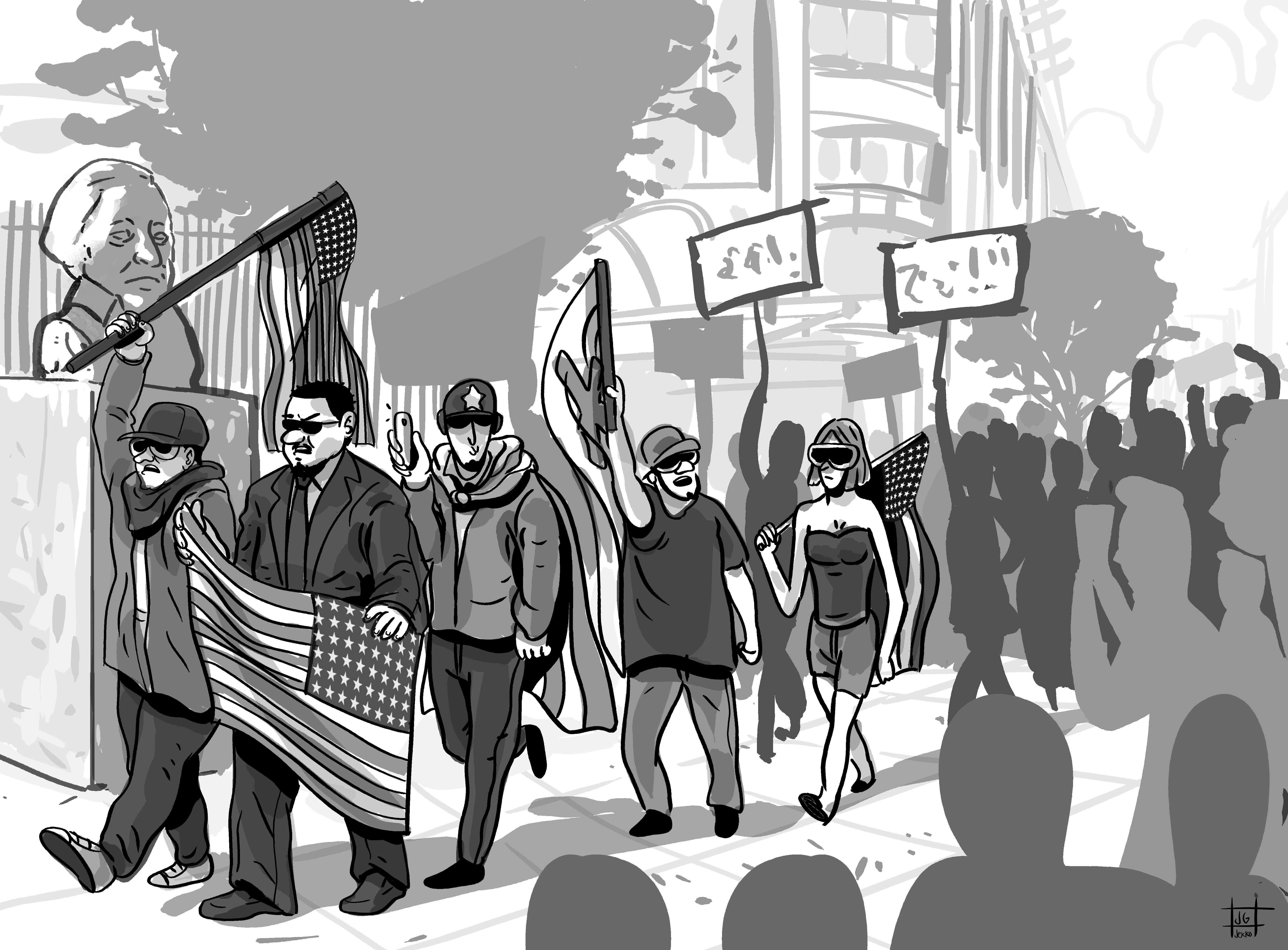On the anniversary of the “Unite the Right” rally in Charlottesville, Va., the same hate groups organized a march in D.C. that passed my dorm room in Dakota Hall on its way to the White House. I had heard in advance that the rally was going to take place, but watching from my sixth-floor window as demonstrators marched on my campus made the situation real in a way I couldn’t have expected. Even from the safety of my room, the knowledge that white supremacists were on campus made me shiver. As a student of color on campus at the time, I felt unsafe.
The University acknowledged that the rally would take place and notified students in an email about the safety precautions it would take. University President Thomas LeBlanc issued a statement that the University condemns displays of white supremacy, and he encouraged our community on campus to do the same. And they did. Hundreds of counterprotesters, including fellow students, vastly outnumbered demonstrators at the rally.

Cartoon by Jekko Syquia
And while the number of counterprotestors comforted me a bit, the large presence doesn’t change the fact that many students – especially students of color like myself – were uncomfortable that demonstrators would march through campus on their way to Lafayette Square.
The two “Unite the Right” rallies are not isolated events. The rallies are part of a disturbing recent trend of hate crimes, motivated by racism and anti-Semitism, that are spurring white supremacists to increase their presence in the public eye and also at college campuses across the United States.
In order to address this, we must remain vigilant and ensure that students consider the perspectives of those who feel especially at risk when these rallies occur. Jewish students and students of color can’t always afford to be on the front lines of every counterprotest due to possible verbal and physical attacks. While there were people of color at the counterprotest at the “Unite the Right 2” rally in front of the White House, not all of us feel safe putting ourselves in that position.
Outnumbering these hate groups is essential to guarantee the safety of all students on campus, and part of the way in which we can do that is by recognizing that these groups are peddling a message that threatens minority students. White students can more easily confront hate groups without directly putting their safety in jeopardy, so their continued presence and support for students of color is essential to us feeling safe. Confronting hate groups – and letting them know that their ideas do not belong on our campus – is a task all students need to take part in.
Though I watched from my dorm room window, I felt a sense of dread knowing what was happening outside. My parents, fearing the worst, told me to stay inside and texted me throughout the day to make sure I was safe. Though the crowd of counterprotesters dwarfed the neo-Nazis, there was no way I could have been sure of that in the moment. Right outside of my window were hundreds of people making their way through waves of police, and my only thoughts were that of the last “Unite the Right” rally in Charlottesville, Va. that left dozens injured and one person dead. When the people bearing the same message came to my campus a year later, I could only assume that the very worst might happen. I was frightened for my safety and for the safety of my fellow students.
Though the rally in D.C. this time was described as a failure, there is no guarantee that an event like this won’t happen again. Much of the reason the counterprotest was a success was simply because the “Unite the Right” rally had a very low turnout. But prominent leaders of hate groups instructed many white supremacists not to attend the march precisely because there would be more productive and organized rallies to attend in the future.
We made white supremacists feel outnumbered this time, but we have not won. We live in a political climate in which hate groups feel emboldened, and they will only try harder in the future to make their message heard. This means that if we want to cultivate an environment in which every student feels safe on campus, these hate groups need to be consistently outnumbered. That responsibility falls on us every single day.
Nate Muramatsu, a senior majoring in international affairs, is a Hatchet columnist.
Want to respond to this piece? Submit a letter to the editor.


